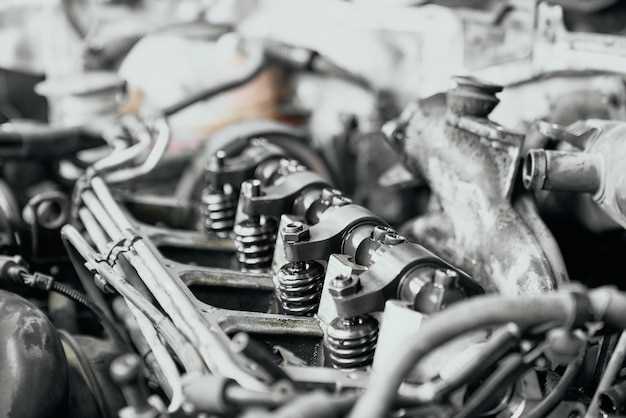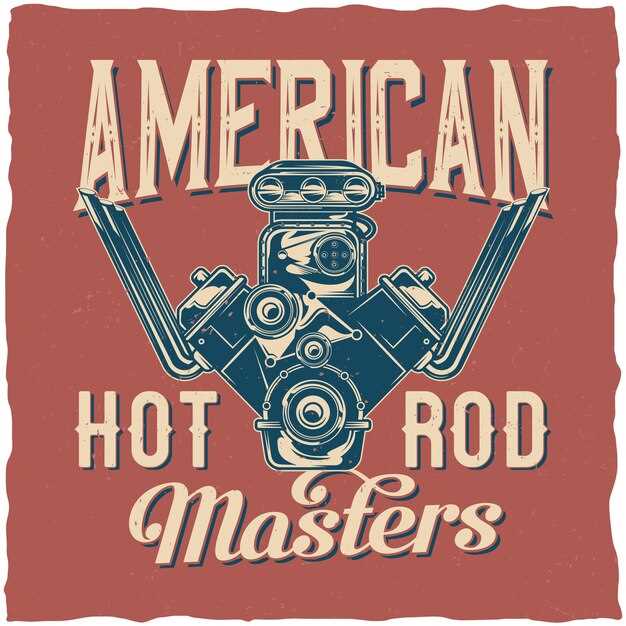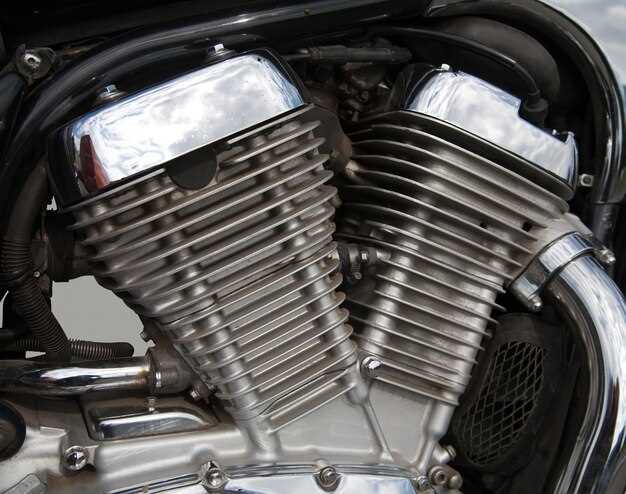
When it comes to classic muscle cars, the roar of a powerful engine is music to the ears of enthusiasts. As the automotive landscape evolves, many car owners are looking for ways to enhance their vehicles through engine swaps. This modification not only boosts performance but also adds a personal touch to a timeless classic. Choosing the right swap can dramatically change the character of a car, taking it from a vintage ride to a modern performance machine.
Engine swaps have become increasingly popular among muscle car aficionados, offering an opportunity to combine the classic aesthetics of the past with the advanced technology of today. Whether you’re looking to increase horsepower, improve fuel efficiency, or simply modernize your ride, there are numerous engine options available that cater to diverse preferences and goals. In this article, we will explore some of the best engine swaps for classic muscle cars, highlighting the benefits and considerations for each swap.
From the iconic small-block Chevy to the formidable LS engines, the choices can be overwhelming. However, understanding the merits of each engine can help you make an informed decision that complements your vehicle’s style and performance needs. As we delve deeper into the world of engine modification, you’ll discover how the right engine swap can breathe new life into your classic muscle car, transforming it into a powerful and exhilarating driving experience.
Choosing the Right Engine for Your Classic Muscle Car
Selecting the appropriate engine for your classic muscle car is crucial for achieving the desired performance and maintaining the vehicle’s authenticity. The primary factors to consider during this modification process include the type of performance you want, compatibility with existing systems, and personal preferences regarding brand and aesthetic.
First, you need to define your performance goals. Are you looking for increased horsepower, better fuel efficiency, or a balance of both? Different engines offer varying power outputs and characteristics. For example, a small-block V8 provides a torque-oriented experience, while a big-block V8 can deliver significant horsepower, making it ideal for drag racing enthusiasts.
Next, consider the compatibility of the engine with your muscle car’s existing drivetrain and components. Ensuring that the engine mounts, transmission, and rear-end gear ratios are suitable for the new engine is essential for a smooth installation. Some engines require extensive modifications, while others can be directly swapped with minimal adjustments.
Another important aspect to keep in mind is brand loyalty and personal preference. Classic muscle car enthusiasts often have strong ties to specific manufacturers. Choosing an engine from a well-known performance brand, such as Chevrolet or Ford, can reinforce the authenticity of your vehicle while potentially increasing its value.
Ultimately, the choice comes down to a balance between performance, compatibility, and personal taste. To aid in your decision-making, here is a comparison table highlighting popular engine options for muscle car modifications:
| Engine Type | Horsepower | Torque | Typical Use |
|---|---|---|---|
| Small-Block V8 | 250-400 HP | 300-450 lb-ft | Street performance, moderate racing |
| Big-Block V8 | 400-700 HP | 500-800 lb-ft | Drag racing, high power applications |
| LS Engine Swap | 350-600 HP | 400-500 lb-ft | Versatile performance, modern upgrades |
| Small-Block Ford | 300-500 HP | 350-450 lb-ft | Street use, moderate racing |
In conclusion, choosing the right engine for your classic muscle car involves evaluating performance goals, compatibility with existing systems, and personal brand preferences. With careful consideration, you can successfully enhance your muscle car’s capabilities while ensuring it remains true to its roots.
Steps to Prepare Your Classic Car for an Engine Swap
Preparing your classic car for an engine swap is a crucial process that requires careful planning and execution. Follow these steps to ensure a successful engine replacement.
- Research and Planning
- Identify the engine type you want to swap.
- Check compatibility with your classic car’s specifications.
- Gather information on the necessary modifications required for the swap.
- Gather Tools and Equipment
- Acquire a quality engine hoist.
- Collect hand tools, including wrenches, sockets, and pliers.
- Ensure you have safety equipment, such as gloves and eyewear.
- Prepare the Workspace
- Create a clean and organized area to work on your classic car.
- Ensure adequate lighting for visibility during the engine swap.
- Have a plan for disposal of old engine components.
- Disconnect and Remove the Old Engine
- Disconnect the battery and remove any electrical connections to the engine.
- Drain fluids from the engine, including oil and coolant.
- Carefully disconnect the exhaust system, transmission, and other components.
- Use the engine hoist to lift and remove the old engine from the vehicle.
- Prepare the Engine Bay
- Clean the engine bay and remove any debris.
- Inspect for rust or damage and repair as needed.
- Make any necessary modifications to accommodate the new engine.
- Install the New Engine
- Align the new engine with the mounts before securing it.
- Reconnect the transmission and exhaust components.
- Reinstall any wiring and plumbing connections to match the new engine requirements.
- Final Checks and Testing
- Double-check all connections and fluid levels.
- Reconnect the battery and ensure all electrical systems are functional.
- Start the engine and look for any leaks or unusual noises.
By following these steps, you can effectively prepare your classic car for an engine swap, leading to a successful and enjoyable project.
Top Engine Options for Increased Horsepower and Torque
When considering modifications for classic muscle cars, selecting the right engine can significantly enhance horsepower and torque. Here are some top engine options that enthusiasts often consider for their performance upgrades.
The LS engine series is a popular choice due to its lightweight design and impressive power output. Variants like the LS1 and LS3 deliver substantial horsepower while maintaining reliability. Their versatility makes them suitable for various classic muscle cars, allowing for custom modifications that can elevate performance to new levels.
Another strong contender is the HEMI engine, particularly the Gen III HEMI found in modern Dodge vehicles. Its robust construction and high compression ratios facilitate excellent torque delivery. Swapping a classic muscle car’s original engine for a HEMI can provide a significant performance boost, making it a favored option among enthusiasts.
The Ford Coyote engine is also gaining popularity for modifications. This 5.0-liter V8 engine delivers exceptional horsepower and torque figures, making it an ideal swap for those looking to modernize their classic muscle car. Its advanced technology and efficient design offer enhanced performance alongside great driveability.
For those seeking maximum power, supercharged options like the Ford 5.4L supercharged V8 are worth considering. These engines can produce, on average, over 500 horsepower, providing a thrilling experience. Their robust design allows for substantial modifications, ensuring drivers can maximize performance to suit their specific needs.
Finally, don’t overlook the classic small-block and big-block Chevy engines, which remain popular for their ease of modification and vast availability of aftermarket parts. These engines can be outfitted with performance kits, camshafts, and headers to extract more horsepower and torque, making them a versatile choice for muscle car enthusiasts.
In conclusion, the best engine choices for increasing horsepower and torque in classic muscle cars vary by preference and application. Whether opting for modern engine technology or classic powerhouses, the right engine swap can turn your vintage ride into an impressive performer on the road.
Necessary Modifications for a Successful Engine Swap

When undertaking an engine swap in a classic muscle car, several essential modifications must be considered to ensure optimal performance and compatibility. The complexity of these modifications largely depends on the engine type chosen and the original vehicle configuration.
1. Engine Mounts: One of the first modifications involves custom engine mounts. Every engine has a specific mounting configuration; thus, adapting or fabricating new mounts is crucial to securely position the engine in the engine bay. Depending on the swap, you might need to modify or replace existing mounts to accommodate the new engine’s weight and dimensions.
2. Transmission Compatibility: The transmission may also require changes to match the new engine. You must consider whether the existing transmission can handle the power output of the new engine. Additionally, modifications might include changing the transmission bell housing, driveshaft length, and changing the coupling methods to connect the transmission to the new engine properly.
3. Exhaust System: The exhaust system often poses challenges during an engine swap. Depending on the engine size and configuration, custom exhaust headers may be necessary. Fabrication may involve redesigning the mid-pipes and exhaust routing to ensure a proper fit while maintaining clearance and performance.
4. Fuel System: A classic muscle car’s fuel system might need to be upgraded to accommodate a new engine, especially if the swap involves a more powerful engine requiring higher fuel flow and pressure. This can involve replacing the fuel pump, adjusting line sizes, and ensuring that the fuel injectors or carburetors are compatible with the new setup.
5. Cooling System: Adequate cooling is vital for high-performance engines. An engine swap may necessitate the installation of a more robust radiator and changes to the cooling fan setup. It’s essential to ensure the new engine’s cooling needs are met to prevent overheating.
6. Wiring and Electronics: Swapping engines typically requires modifications to the electrical system. This might include rewiring the engine harness or integrating a new ECU (engine control unit) compatible with the new engine setup. Special attention should be paid to connections involving sensors, as modern engines may have different electrical components than the original.
7. Suspension Upgrades: If the new engine significantly increases weight or power, suspension modifications may be necessary. Upgrading springs, shock absorbers, and sway bars can improve handling and stability, ensuring that the car performs safely and effectively on the road.
Completing these necessary modifications will pave the way for a successful engine swap, enhancing the car’s performance while maintaining safety and reliability. Each classic muscle car is unique, so careful planning and consideration are essential to achieving the best results.
Legal Considerations and Emissions Regulations for Engine Swaps

When considering an engine swap for a classic muscle car, it’s crucial to understand the legal implications and emissions regulations surrounding such modifications. Compliance with local, state, and federal laws is necessary to ensure that your vehicle remains road-legal and does not pose environmental concerns.
Here are the key points to consider regarding legal considerations and emissions:
- Understand the Local Laws: Different jurisdictions have varying regulations concerning engine modifications. Research your local laws and consult with automotive regulators to ensure compliance.
- Emissions Standards: Many regions enforce emissions standards that must be met after an engine swap. Make sure the engine you plan to install complies with the emissions regulations of your area.
- Safety Inspections: In some areas, modified vehicles may require safety inspections to confirm their roadworthiness. Be aware of how an engine swap might impact the inspection process.
- Insurance Considerations: Modifying an engine can affect your car insurance policy. Inform your insurer about the modifications to avoid complications during claims.
- Title and Registration: Depending on the extent of the modification, you may need to update your vehicle’s title or registration to reflect the new engine. Follow the appropriate procedures for your state.
Additionally, consider the following steps before proceeding with an engine swap:
- Research and select an engine that complies with emissions regulations.
- Consult with professional mechanics or automotive experts for guidance on legal compliance.
- Keep detailed records of the swap process to present during inspections or in case of inquiries.
By adhering to local laws and emissions regulations, you can enjoy your engine swap while ensuring your classic muscle car remains in good standing on the road.
Common Challenges and Solutions During the Engine Swapping Process
One of the most significant challenges during an engine swap is ensuring compatibility between the new engine and the existing components of the vehicle. Different engine types may require specific modifications to the motor mounts, transmission, and wiring harness. It is essential to thoroughly research the dimensions and specifications of both the new engine and the car to identify necessary adjustments.
Another common issue is the integration of the engine with the vehicle’s electrical system. Swapping in a modern engine often involves adapting the factory wiring to accommodate new sensors and control modules. Solutions include using aftermarket wiring harnesses specifically designed for certain engine swaps or employing professional services to ensure proper connections and functionality.
Cooling system compatibility is also a frequent concern. Upgrading the engine may necessitate a more efficient radiator or an entirely new cooling setup. Evaluating the cooling needs of the new engine and modifying the existing system accordingly will prevent overheating and enhance reliability.
Fuel delivery can pose additional hurdles. Different engines may require specific fuel pumps, lines, and regulators to operate effectively. Ensuring the fuel system matches the engine’s requirements will ensure optimal performance and prevent any fuel starvation issues.
Finally, legal regulations surrounding emissions can complicate the swap process. It’s vital to know local laws regarding engine modifications, especially when it comes to emissions compliance. Solutions may involve installing emission control devices from the donor vehicle or opting for an engine that meets current emissions standards to avoid fines and ensure road legality.




